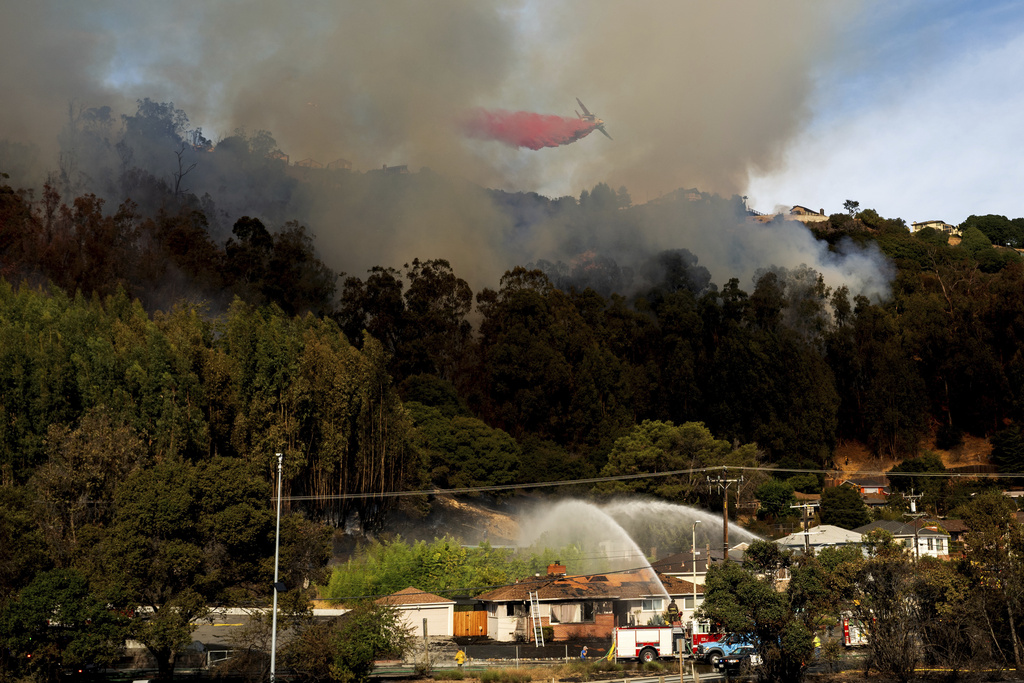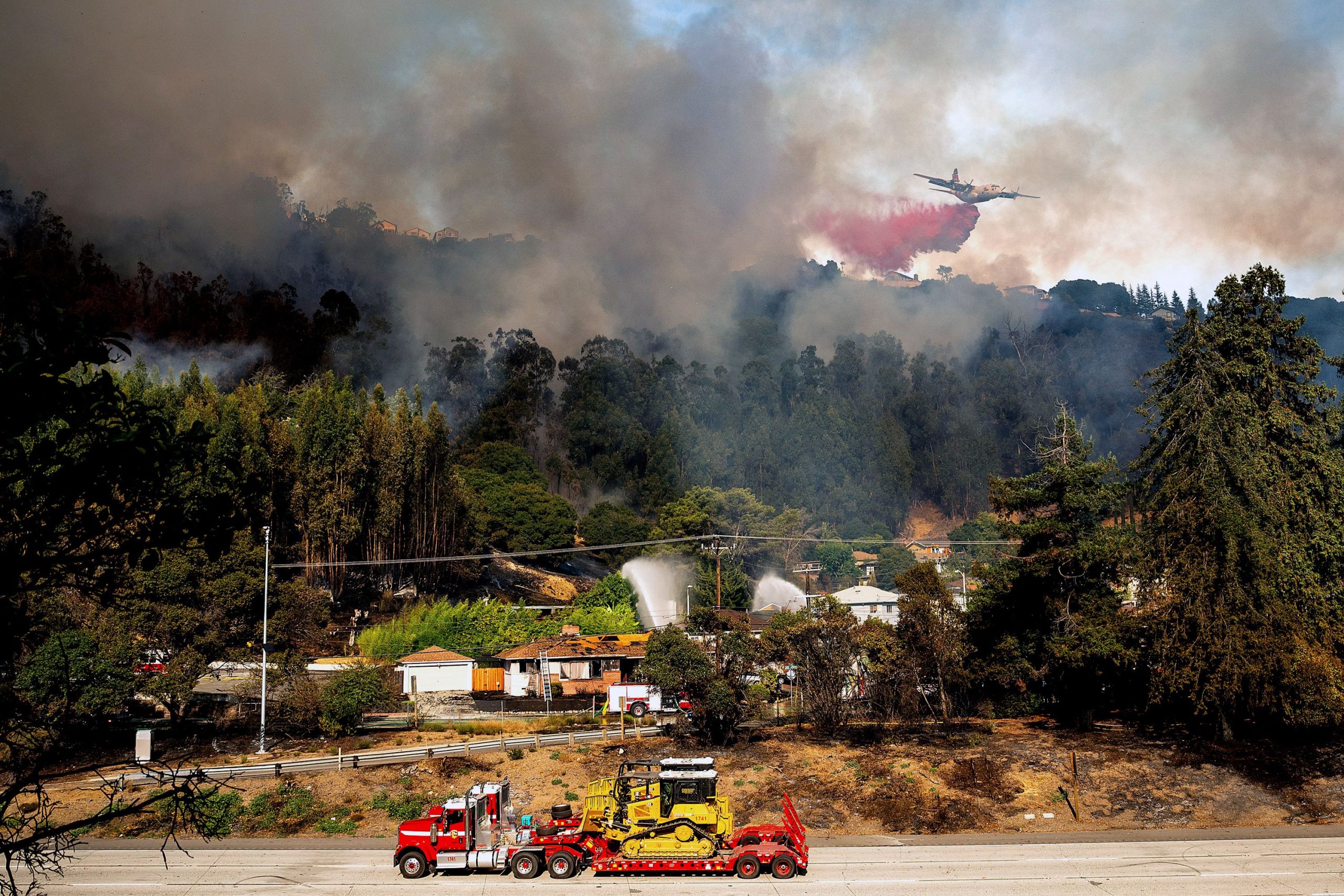A fast-moving fire erupted in Oakland on Friday, fueled by strong winds, which led to the destruction of two homes and caused damage to several others in a hillside neighborhood. The fire prompted the evacuation of approximately 500 people as more than 100 firefighters responded to contain the flames. By late afternoon, crews had managed to stop the fire’s spread after it burned about 13 acres. While no serious injuries or fatalities were reported, some homes sustained smoke and water damage. The fire’s origin remains unknown.
Traffic on Interstate 580 was significantly impacted, as parts of the freeway were closed to allow evacuations and firefighting efforts. Smoke from the blaze was visible from several miles away, causing major congestion as residents attempted to leave the area. Emergency vehicles faced challenges reaching the fire due to the heavy traffic, but firefighters were ultimately able to contain the fire and prevent further damage to the hundreds of homes that had been at risk. Some evacuation orders remained in effect into the night.

Fast-Moving Oakland Fire Destroys Homes and Forces Evacuations Amid Strong Winds and Statewide Wildfire Risk
The Oakland fire occurred during a period of heightened wildfire risk across California, with red flag warnings in place due to dry, gusty conditions. The notorious diablo winds, which commonly occur in autumn, contributed to the dangerous fire weather in Northern California. To reduce the risk of new wildfires, Pacific Gas and Electric (PG&E) shut off power to around 16,000 customers across 19 counties. Wind gusts in some areas reached up to 65 mph, increasing the likelihood of fires spreading.
In Southern California, fire crews were also battling a smaller brush fire near Hacienda Heights in Los Angeles County. This fire, covering five acres, briefly threatened nearby homes, but firefighters were able to bring it under control by nightfall. Although no evacuations were necessary, red flag warnings were also in effect for Southern California due to the risk posed by the Santa Ana winds, which were forecasted to produce gusts of up to 55 mph in mountain areas.
Meanwhile, parts of Northern California near Lake Tahoe experienced lighter weather, with light snowfall and sub-freezing temperatures recorded in the Sierra Nevada region. The National Weather Service issued a freeze warning for this area, where temperatures were expected to drop into the low 20s Fahrenheit. However, despite these colder conditions in some locations, the overall wildfire risk remained high across much of the state due to the continuing hot and dry winds.











































